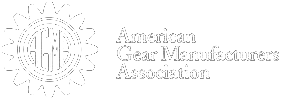
Gear Systems Design for Minimum Noise - November 12-20, 2024
-
You must log in to register
- Non-member - $2,050
- Member - $1,550
Already registered?
Log in now.
Course Rationale/Students Course Designed to Serve
Gear and gearbox design and quality control engineers involved with design and manufacture of gear systems used in applications where noise is of special concern such as medical equipment, electric vehicles, and any other application where the level and/or character of the noise emitted by the gear system is of significant concern.
Learning Objectives
- Understand the need for gearbox system noise control and, especially, the difference between “gear noise” and “gearbox system noise”
- Become familiar with the “nature” of noise and its measurement as well as terminology standards, and units of measurement appropriate to gear technology
- Learn the mechanisms by which observer noticed noise is generated and transmitted
- Gain a knowledge of the experimental and analytical methods for measuring noise, with particular emphasis on application rather than theory.
- Explain the importance of equal planet/star gear spacing and how a system can be designed with unequal planet spacing.
- Understand the various design and manufacturing factors that influence gear system noise including gear tooth geometry and accuracy, speed, materials, housing design, bearing type, gear type, air entrapment, root clearance, interference alignment, surface finish, and phasing.
- Recognizing that it is often necessary to address noise issues after the gearbox system is designed, learn how enclosures, absorbers, dissipative dampers, isolators (gearbox and gear blank), and impulse phasing can be applied to existing systems to reduce noise level.
1.6 CEUs
Components visible upon registration.




